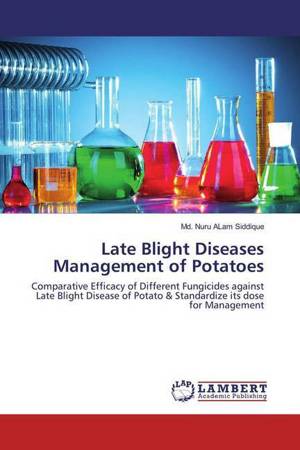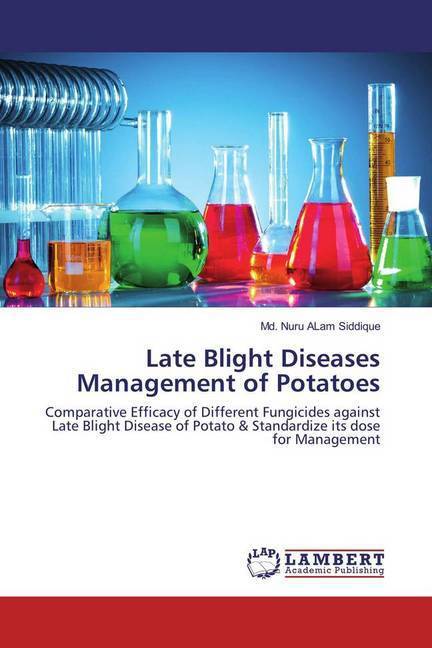
- Afhalen na 1 uur in een winkel met voorraad
- Gratis thuislevering in België vanaf € 30
- Ruim aanbod met 7 miljoen producten
- Afhalen na 1 uur in een winkel met voorraad
- Gratis thuislevering in België vanaf € 30
- Ruim aanbod met 7 miljoen producten
Zoeken
Late Blight Diseases Management of Potatoes
Comparative Efficacy of Different Fungicides against Late Blight Disease of Potato & Standardize its dose for Management
Md. Nuru Alam Siddique
Paperback | Engels
€ 35,45
+ 70 punten
Omschrijving
Some plant diseases that can completely destroy potato plots, late blight is one of the devastating fungal diseases that attacks the potato field and completely destroy the potato farm. If any proper preventive measure cannot be taken from beginning of initiate the late blight, farmers as well as potato seed production companies can be faced into great hamper. The objective of this research is to standardize the protocol by which late blight diseases can be controlled easily without inhibition of the plants growth and its yield. Plant growth as well as its yield gradually decreased due to the application of Carbondaxim and Matalaxyl. As results the farmers and seed potato production companies cannot get sufficient production/ expected yield. It was concluded that Sunoxanil 72 WP (Cymoxanil 8%+ Mancozeb 64%) acted as the best fungicide when applied as prophylactic measures. Sunoxanil 72 WP was combined with Contaf 5EC (Hexaconazol 5%) or Actiphose (Phosphorous acid) showed the best result when applied as curative measures. Therefore, it is recommended that Metalaxyl and Carbondaxim application should be avoided to protect the late blight after or before appearance of the disease.
Specificaties
Betrokkenen
- Auteur(s):
- Uitgeverij:
Inhoud
- Aantal bladzijden:
- 88
- Taal:
- Engels
Eigenschappen
- Productcode (EAN):
- 9783659976377
- Uitvoering:
- Paperback
- Afmetingen:
- 150 mm x 220 mm

Alleen bij Standaard Boekhandel
+ 70 punten op je klantenkaart van Standaard Boekhandel
Beoordelingen
We publiceren alleen reviews die voldoen aan de voorwaarden voor reviews. Bekijk onze voorwaarden voor reviews.








